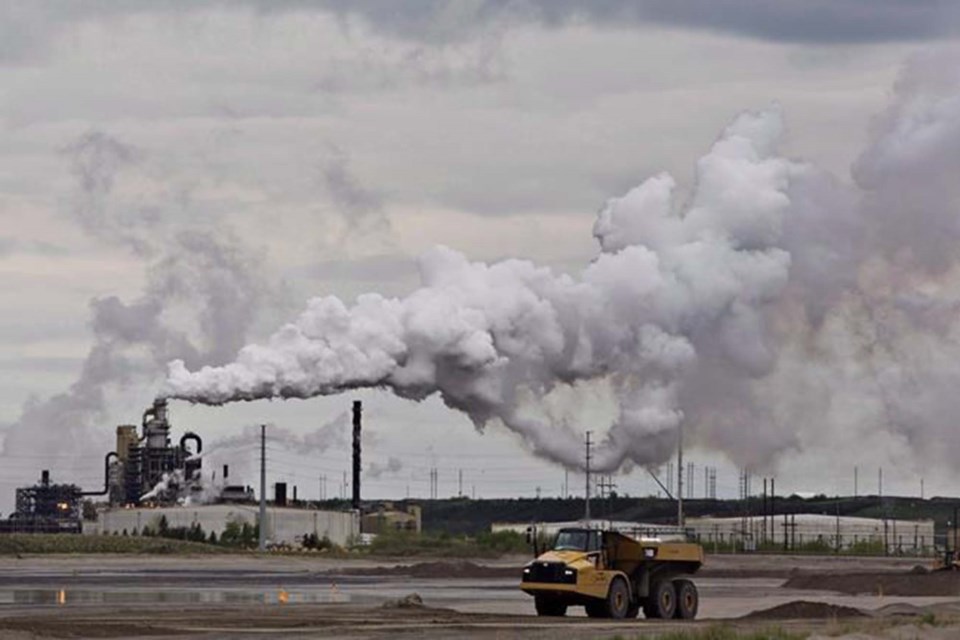Oil-sands mining companies won’t be forced to pay more to ensure money will be available to eventually clean up sites under changes to Alberta’s security-payment rules, according to documents obtained by The Globe and Mail.
Changes to the rules, slated for release this week, will also not alleviate the concerns of stakeholders who worry that a global shift away from fossil fuels could cause a downturn in the industry, further eroding the companies’ ability to pay.
Liabilities have skyrocketed by billions of dollars since 2010 – even though oil companies have added just a single dollar into the province’s cleanup coffers, says data from the Alberta Energy Regulator.
The Mine Financial Security Program (MFSP) is administered by the regulator using policy guidance from the environment ministry. The AER collects financial security from oil-sands and coal-mine owners to ensure that the companies can cover the cost of cleaning up their messes, rather than foisting the bill onto taxpayers.
The government has been reviewing the MFSP since 2021, after a series of investigations by Alberta’s Auditor-General identified a ream of potential problems with its program. The documents that The Globe obtained outline government changes to the program.
One of the biggest issues was that the formula used to calculate the value of mines – thus, the security requirements their owners pay – was inconsistent with actual asset values. The formula also failed to take into account the impact of future price declines on the economic value of oil reserves, according to the auditor.
“Without an effective and timely monitoring program, necessary adjustments to security amounts may not be promptly identified, which increases the risk that Albertans will end up having to pay for the conservation and reclamation of mine sites,” reads an auditor report from 2015.
Six years ago, the AER held $1.46-billion in security to cover the eventual cost of mine cleanup, compared with estimated reclamation liabilities hovering just over $28-billion. Numbers released by the AER this week show that it now holds about $1.71-billion in security, compared with estimated liabilities of $57.3-billion.
Imperial Oil fined $50,000 over oil sands leak
So even though the estimated cost of mine cleanup has jumped more than 100 per cent since 2018, the money being held to cover the bill has grown by only 17 per cent. And last year, that cash came solely from coal companies, according to AER data.
In fact, oil-sands mining companies have added just $1 to the pot since 2010, because they’re not required to post additional reclamation security payments until they reach the point where they have less than 15 years of oil reserves remaining.
And that issue won’t be addressed by changes to the MFSP, though companies will no longer be able to use off-site mine reserves as collateral to backstop reclamation responsibilities.
Martin Olszynski, chair in energy resources and sustainability at the University of Calgary’s faculty of law, is a consultant for the MFSP review on behalf of Athabasca Chipewyan First Nation in northern Alberta.
He said that changes to the program won’t address a fundamental design flaw: It essentially allows oil companies to avoid posting security when their economics are good, and only requires cash later when they are much more likely to be financially distressed.
In an interview Wednesday, he called the changes “disappointing and totally inadequate to address long-standing concerns that the government knows about.”
Prof. Olszynski was also critical of a change that will allow mine operators to reduce the value of their mine’s probable reserves by 15 per cent under the program’s asset calculation, because it builds too much discretion and delays into the program.
“Every year that goes by is a lost year,” he said. “There is clearly a clock that is ticking here if Alberta is going to have any chance of ensuring that there are sufficient funds set aside to deal with these liabilities.”
Ryan Fournier, press secretary for Environment Minister Rebecca Schulz, said in an e-mail Wednesday that the changes to the program make it stronger.
“We’ve made common-sense changes that don’t unfairly punish our energy sector but do make sure that the public won’t be left paying for future reclamation costs,” he said.
That includes the fact that mine operators will no longer be able to use off-site oil reserves as collateral and changes to how some oil reserves are valued to better ensure companies can cover future cleanup costs, he said.
“Oil sands are still relatively young in their lifecycle. They are covering their liabilities, just mostly through collateral, not cash and bonds,” he wrote. “In the coming years, the oil sands will provide more financial security, as required by the program.”




.png;w=120;h=80;mode=crop)